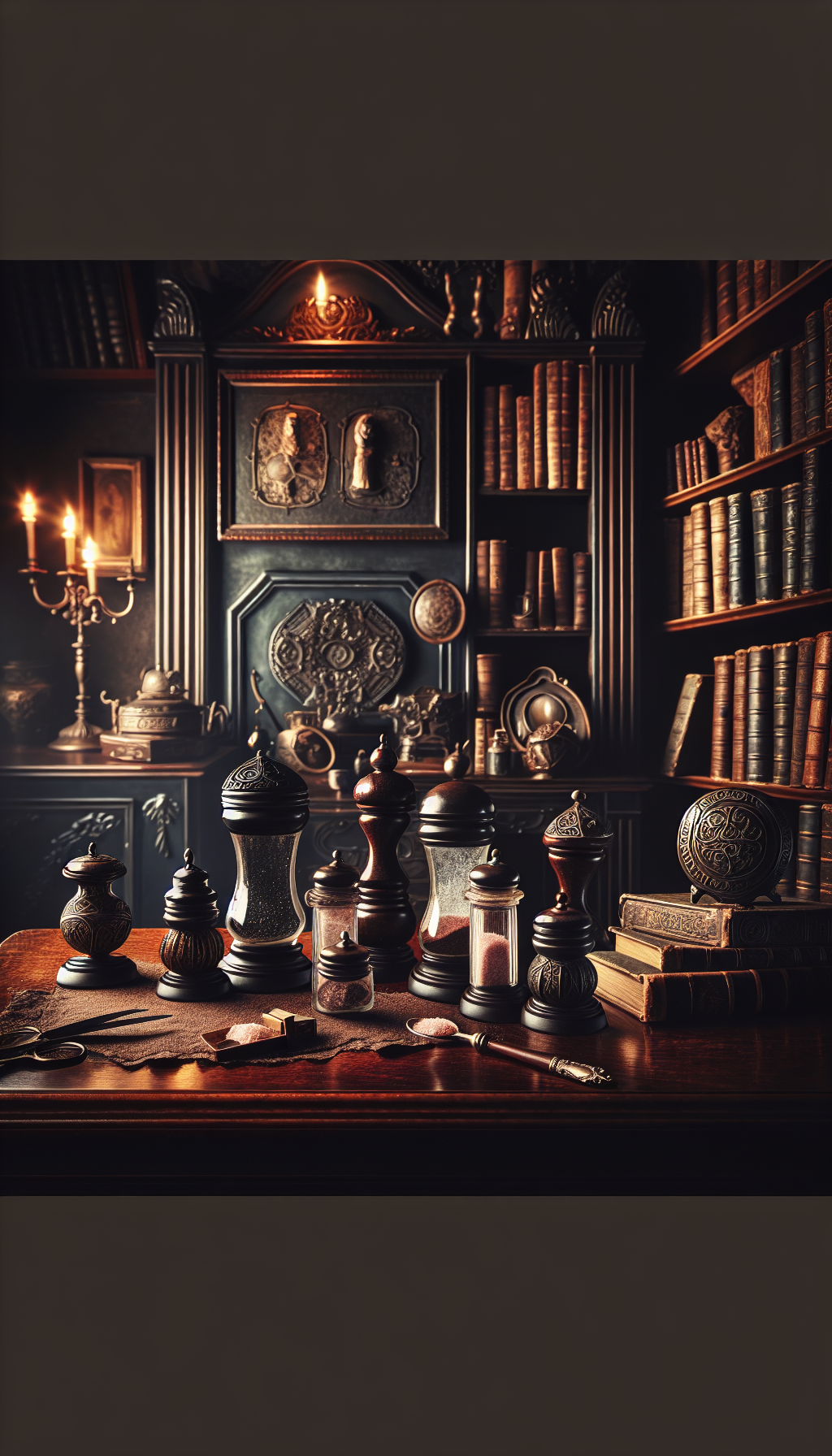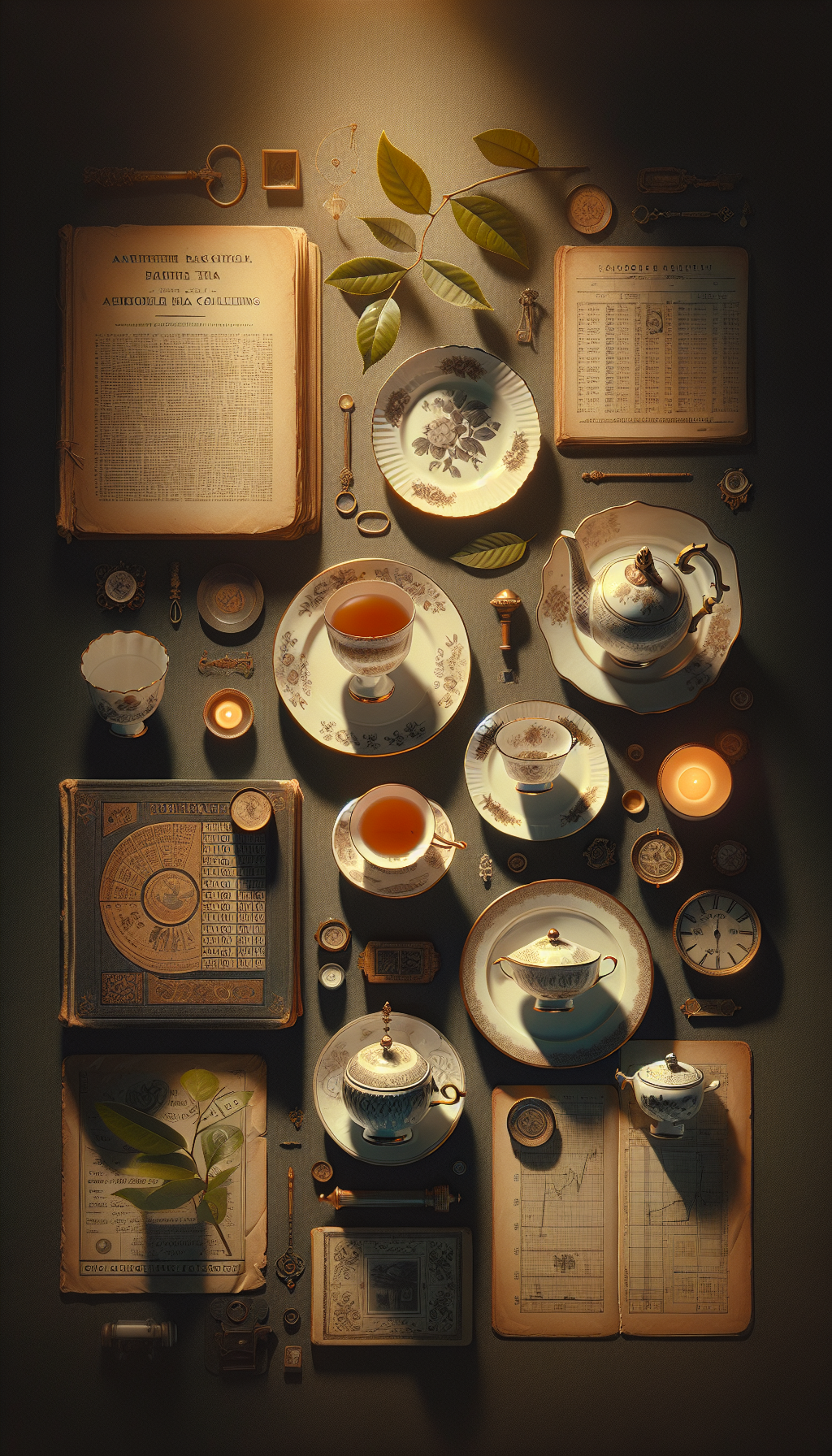Edo Period Teapot
An Edo period teapot sits at the crossroads of Japanese tea culture, Chinese influence, and regional kiln innovation. From the literati’s sencha equipment to porcelain export wares and iron kettles, Edo (1603–1868) produced vessels whose forms, clays, and inscriptions still guide appraisers today. This article maps the field: what qualifies as an “Edo teapot,” how to distinguish regional schools, what to examine for dating and authenticity, and how condition and provenance shape value.
What We Mean by “Edo Period Teapot”
In Japan, “teapot” spans several distinct objects with different functions:
- Kyusu: A small teapot used to steep leaf tea (sencha, gyokuro). The side-handled form (yokode) becomes widespread in the later Edo period, coinciding with sencha’s rise.
- Uwade/atode kyusu: Top-handled (uwade) or rear-handled (ushirode/atode) teapots; often larger, sometimes used for serving boiled water or tea in social settings.
- Tetsubin: Cast iron kettle for boiling water. Strictly speaking, an Edo tetsubin is a kettle rather than a teapot. The enamel-lined iron “tetsukyusu” for brewing tea appears more commonly in Meiji and later.
Two tea cultures inform Edo wares:
- Chanoyu (matcha): A whisked tea ceremony that doesn’t use a teapot; its metal kettles and ceramic tea bowls influence the aesthetics and metalwork traditions.
- Sencha (leaf tea): Introduced from China and popularized in the 18th century by monks and literati like Baisao, sencha drove demand for small teapots, cups, and trays—collectively sencha dōgu.
When appraisers speak of Edo “teapots,” they usually mean stoneware or porcelain kyusu made for sencha, plus some iron kettles (tetsubin) from the same period, acknowledging the functional distinction.
Forms and Materials You’ll Encounter
- Stoneware kyusu (unglazed or lightly glazed): Tokoname and Banko are the best-known Edo traditions for side-handled teapots. Expect refined clay bodies, careful lid fit, and often incised or stamped signatures.
- Porcelain teapots: Arita/Imari, Kakiemon-style, Nabeshima (domain porcelain), Kyoto ware (Kyō-yaki), and Kutani present with overglaze enamels and sometimes gold. Shapes mirror Chinese pourers or annulate small pots with loop handles.
- Iron tetsubin: Typically undecorated to moderately decorated surface (nashiji pear skin, arare hobnail, basketweave). Edo examples lack enamel interiors. Lid finials and inside lid signatures can be clues.
Functional attributes
- Filter: Early kyusu may show a bank of hand-punched holes where the spout joins the body. By late Edo into early Meiji, integrated ceramic mesh (sasame) or a perforated ball filter becomes more common in Tokoname/Banko production.
- Lid fit and “chime”: Quality kyusu have lids that seat precisely. When lightly rotated, some produce a clear ring—an indicator of tight fit and thin, even walls.
- Scale: Sencha kyusu are typically small (often 80–250 ml). Larger top-handled pots serve groups or hot water.
Regional Schools and Tell-Tale Traits
Tokoname (Owari Province)
- Material: Shudei (red) and yakishime (high-fired unglazed) clays, sometimes burnished to a satin sheen; micaceous sparkle in some bodies.
- Form: Side-handled kyusu with crisp spouts, thin walls, and precise fit. Hand-cut multi-hole strainers are typical late Edo; ball filters grow common into Meiji.
- Marks: Carved or stamped seals near the handle root or on the base. The Jōzan lineage (常山; Jōzan I 1797–1868) bridges late Edo/early Meiji and is highly collected.
Banko ware (Kuwana, Ise Province)
- Material: Purple-brown and red clays, sometimes with molded relief and calligraphic inscriptions reflecting literati taste.
- Form: Side-handled kyusu for sencha sets. Surfaces can be polished; lid knobs often sculptural.
- Marks: “Banko” (萬古/万古) or “Banko-fu” marks in impressed cartouches; personal seals of potters appear on the base or lid underside.
- History: The tradition traces to Nunami Rōzan (1718–1778), with later revivals; Edo examples show Chinese literati influence.
Arita/Imari and Kakiemon (Hizen Province)
- Material: Hard white porcelain with transparent glaze.
- Decoration:
- Kakiemon: Milky white ground with asymmetrical, airy motifs in iron-red, light blue-green, yellow; restrained gold.
- Imari/kinrande: Dense polychrome (iron-red, underglaze blue) with profuse gilding; export-friendly patterns.
- Forms: Small teapots with loop or overhead handles; lids often domed with finials.
- Marks: Fuku (福) in various cartouches, “Kakiemon”-style marks (rarely genuine on Edo pieces), and kiln-specific brush marks; Nabeshima typically unmarked but impeccably finished.
Kutani (Kaga Domain)
- Material: Porcelain or stoneware body with bold overglaze enamels.
- Decoration: Strong greens, yellows, purples in earlier aesthetics; later Edo sees intricate figure and landscape painting that anticipates Meiji taste.
- Marks: “Kutani” (九谷) brush or seal marks; late Edo marks can be idiosyncratic.
Kyoto ware (Kyō-yaki/Kiyomizu)
- Material: Fine-grained body (porcelain or stoneware), meticulously painted overglaze enamels, gold, and occasional underglaze blue.
- Aesthetic: Elegant, urban; literati motifs, seasonal flowers, and poems.
- Marks: Variety of kiln and artist marks; boxes (tomobako) with brush inscriptions add confidence in attribution.
Tetsubin (Morioka, Yamagata, and other centers)
- Surface: Peach-skin (nashiji), hobnail (arare), smooth, or basketlike textures; integral cast-in patterns.
- Construction: No enamel inside for Edo examples. Surfaces show natural oxide patina; light lime deposits inside are normal.
- Marks: Cast or chiselled signatures under the lid or near the handle support; removable lids may carry foundry names.
Dating and Authentication: Field Notes
- Handle orientation and function
- Side-handled kyusu for sencha are more prevalent in the late Edo period; earlier Edo tea culture favored matcha equipment.
- Large top-handled pots can be earlier but persist throughout Edo; cross-check with clay and decoration.
- Filters
- Wall-punched multi-hole strainers are consistent with late Edo craftsmanship.
- Precision ball filters are more typical from late Edo into Meiji. Modern machine-like mesh suggests later manufacture.
- Clay and surface
- Tokoname shudei presents matte to satin, with crisp turning lines and minimal warping. The color is from clay chemistry, not a surface stain.
- Banko purples and browns can be variegated; look for subtle polishing rather than glassy glaze.
- Overly bright, uniform red or purple with mold lines and a sprayed look usually signals later pieces.
- Porcelain palette and gilding
- Kakiemon’s airy spacing and restrained palette feel very different from dense Meiji decoration.
- Late Edo kinrande gold is rich but can show tasteful restraint; Meiji export often goes maximalist.
- Wear: genuine gilding shows natural, uneven thinning on handle terminals and lid edges; even “brassing” from artificial wear is suspect.
- Foot and lid engineering
- Porcelain teapots with neatly cut foot-rings, spiral wheel marks, and occasional tiny spur scars under the lid flange are consistent with Edo Arita practices.
- A lid that sits with minimal wobble and a spout that pours cleanly without dribble suggest high-quality Edo handiwork, but be cautious—modern masters replicate this too.
- Marks and inscriptions
- Banko: look for “萬古/万古” combined with an artist seal. Study the calligraphy—stiff or deeply impressed, generic “BANKO JAPAN” marks are 20th century.
- Tokoname: “常山” (Jōzan) and other family seals; genuine Edo/early Meiji signatures are cut with a blade, not acid-etched or laser-sharp.
- Kutani/Kyō: painted marks under the glaze or overglaze; Meiji marks proliferate—pair with stylistic dating.
- Tetsubin: signed under the lid or near handle lugs; Edo lids can be heavier with hand-finished rims. Enamel interiors point later than Edo.
- Provenance and boxes
- Tomobako (signed storage boxes) with period calligraphy can corroborate attribution. The wood, wear, and ink oxidation should align with claimed age.
- Repairs and restorations
- Kintsugi (urushi lacquer with gold) repairs can be period and add historical interest when well executed.
- Modern epoxy fills, spray-in painting, and silicone seals detract from value and can harm the piece.
- Tooling and seams
- Hand-thrown bodies show subtle throwing rings inside; molded later wares may show seam lines or uniform wall thickness lacking throw marks.
- Scent and residue
- Edo clay kyusu often carry a mild tea scent and amber interior patina. A chemical odor or pristine interior with heavy exterior wear is a mismatch.
Appraisal Factors and the Current Market
- Attribution and school: Correctly identifying Tokoname Jōzan lineage, early Banko literati ware, or true Kakiemon/Nabeshima porcelain has the greatest impact. Misattribution between late Edo and Meiji is common—err on the conservative side without strong evidence.
- Form and function: Side-handled kyusu associated with sencha culture hold strong collector interest; complete sencha sets (teapot, cups, yuzamashi cooling bowl, tray) raise value.
- Condition: Intact spout tips, original lids with correct fit, and absence of body cracks are critical. Professional, period-appropriate kintsugi can be acceptable; non-reversible modern repairs reduce value.
- Surface and patina: For clay kyusu, preserved surface burnish and subtle tea-seasoning are positives. Overcleaning that opens the clay’s pores can dull the look and flavor (if used). For tetsubin, an even, stable patina is preferred; active red rust and leaks are liabilities.
- Decoration quality: On porcelain, delicacy of brushwork, balance of motifs, and integrity of gilding differentiate Edo masterpieces from workshop products and later tourist ware.
- Rarity: True Edo porcelain teapots in Kakiemon taste and signed late-Edo kyusu by named masters are scarcer than Meiji export pieces.
- Documentation: Tomobako inscriptions, old collection labels, and domain provenance (for Nabeshima) act as force multipliers for value.
Market notes
- The best Edo kyusu by recognized names and top-tier porcelain examples remain competitive with international collectors of tea culture.
- Early iron kettles with crisp casting, fine lids, and reputable foundries are sought after, though functionality concerns limit some buyers.
- Beware optimistic dealer attributions that lump late Edo and early Meiji together; subtle features often decide multiples of value.
Care, Handling, and Ethical Restoration
- Handling: Support teapots by the body, not just the spout or side handle. For uwade, lift from the handle only when the pot is light and your other hand supports the body.
- Cleaning clay kyusu: Rinse with warm water only. Avoid detergents that penetrate clay and alter flavor. Do not scrub away tea patina; it stabilizes the interior.
- Porcelain: Use lukewarm water and a soft cloth. Avoid thermal shock—rapid temperature changes crack lids and spouts.
- Tetsubin: Empty after use, remove the lid, and dry with residual heat. Never scour the interior; a light lime scale is protective. Do not enamel or seal the inside of an Edo tetsubin.
- Storage: Keep lids ajar to avoid trapped moisture. Use padded shelves and avoid stacking. For boxed pieces, periodically air out wooden boxes.
- Restoration: Choose reversible, documented conservation. Traditional urushi-based kintsugi is appropriate for period ceramics; disclose any repairs in appraisals.
Practical Checklist for On-the-Spot Assessment
- Confirm function: kyusu for sencha or iron kettle? Enamel-lined interior indicates later “tetsukyusu,” not Edo tetsubin.
- Check handle orientation: side-handle prevalence suggests late Edo onward; verify against other features.
- Inspect filter: wall holes (late Edo) vs precision ball mesh (late Edo–Meiji); modern micro-mesh suggests later.
- Assess clay: Tokoname shudei red or Banko purple-brown with natural, not painted, color; look for burnish and fine turning lines.
- Examine decoration: Kakiemon airy motifs vs dense kinrande; Edo palettes feel balanced and restrained compared with many Meiji exports.
- Read marks: “萬古/万古” for Banko; “常山” for Tokoname Jōzan; “九谷” for Kutani; “福” for Imari. Compare style and placement; avoid generic stamped modern marks.
- Test lid fit: gentle rotation for the “chime”; verify no wobble and close tolerance.
- Observe spout: sharp, clean cut with even flow; dribbling can signal poor later manufacture or damage.
- Look for repairs: kintsugi seams (traditional) vs epoxy fills or spray touch-ups (modern).
- Evaluate patina: interior tea seasoning and exterior satin sheen for clay; stable dark oxide for iron.
- Cross-check box: tomobako with period calligraphy and matching artist/kiln information increases confidence.
- Note inconsistencies: heavy exterior wear with pristine interior, or vice versa, calls for caution.
FAQ
Q: How do I distinguish an Edo tetsubin from a later enamel-lined iron teapot? A: Edo tetsubin are kettles for boiling water and do not have enamel interiors. They show an iron oxide patina inside with possible light lime scale. Enamel-lined interiors indicate a tetsukyusu, a later form used to brew tea directly, most commonly Meiji or later.
Q: Are side-handled kyusu always Edo period? A: No. Side-handled kyusu proliferate in late Edo with sencha’s popularity, but production expands in Meiji and beyond. Date by a combination of clay, filter style, marks, and decoration—not handle orientation alone.
Q: Is it safe to brew tea in an Edo clay kyusu? A: If structurally sound and free of toxic restorations, unglazed Edo clay kyusu are generally safe for brewing. Avoid detergents and acids; rinse with warm water only. For museum-quality or fragile pieces, reserve for display.
Q: What common misattribution traps should I watch for? A: Meiji export porcelain labeled “Edo,” modern stamped “Banko” or “Jōzan” marks on factory wares, enamel-lined iron marketed as Edo tetsubin, and over-cleaned kyusu with lost patina. Always corroborate marks with material, form, and workmanship.
Q: Do kintsugi repairs lower value? A: It depends. Period, skillful kintsugi using urushi and powdered gold can be culturally valued and acceptable, especially on rare pieces. Modern, non-reversible repairs typically reduce value. Disclose all repairs in appraisals.
An Edo period teapot rewards close looking—at clay and glaze, engineering and calligraphy, restraint and balance. Ground your appraisal in verifiable features, and you’ll navigate the Edo-to-Meiji boundary with confidence.



